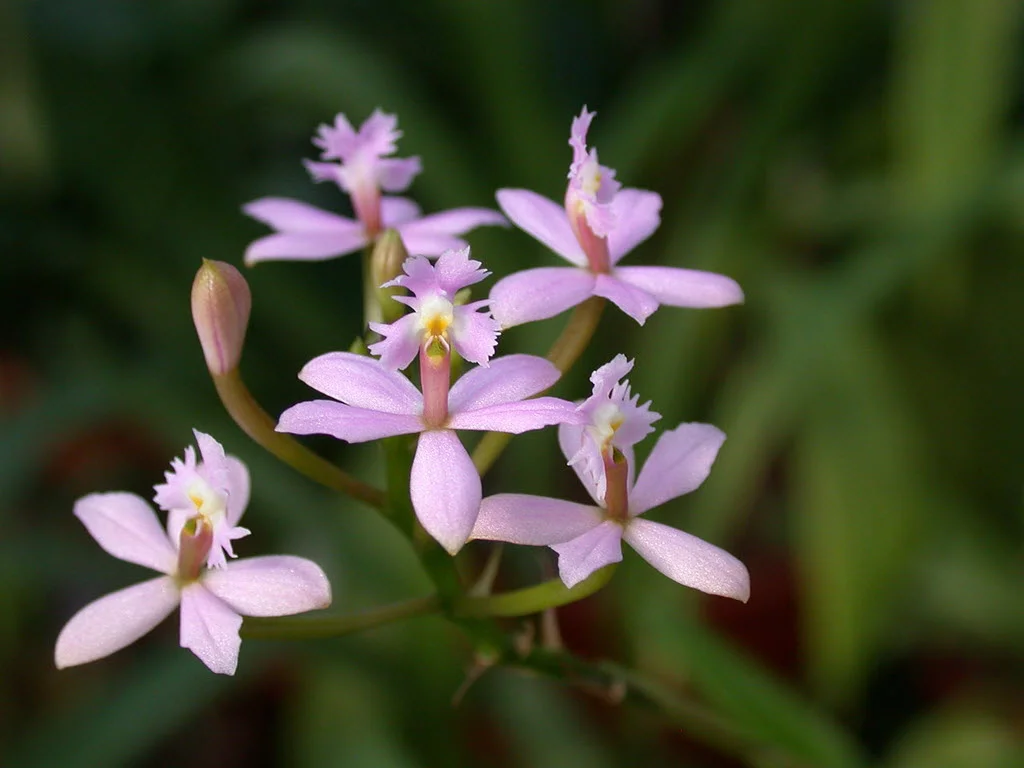Table of Contents
Pronunciation: FAY-us
Other Names: Nun Orchid
Introduction
The Phaius Orchid earned its nickname Nun's Orchids due to the resemblance of its hooded blossoms to a nun's veils. Originally introduced in 1778, this orchid is native to China, Burma, Thailand, Vietnam, and the Philippines.
Phaius Tankervilliae
This showy orchid is dominated by four-inch flowers that come in shades of pink, yellow, and light brown. Leaves hide its large pseudobulbs, and these thin leaves have deep grooves, and they can grow up to four feet long and ten inches wide.
Temperature
These orchids like intermediate or warm temperatures, and they won't tolerate temperatures much lower than 60°F (16°C). The daytime temperatures should stay between 75°F to 85°F (24°C to 29°C) with little fluctuation. They do tolerate slightly cooler nighttime and winter temperatures that range between 60°F and 65°F (16°C to 18°C) but not much lower.
They won't tolerate cooler temperatures or frost without significant damage, so if you live in an area that regularly sees these temperatures, it's best to bring them indoors during cold snaps and at night.
Light
As long as your temperatures stay between 75°F to 85°F (24°C to 29°C), your Phaius Orchid prefers bright but filtered sunlight. If the temperatures rise over 85°F (29°C), they'll require more shade to avoid damage. You can either move them into shaded areas or place netting over them to break up the sunlight.
If they're indoors, set them by a south-facing window but set them slightly back from the glass, so they're getting sunlight, but it's not overly bright or hot. If you notice yellow spots on the leaves, they're getting too much sun.
Water and Humidity
This orchid doesn't have a way to store large quantities of water, so you want to water them liberally every morning or every other morning. They do like to dry out slightly between watering, so how much you water will depend on the daily temperatures and humidity levels.
When your orchid goes into the slower growth period in the fall and through the winter, you can cut back to watering it every few days as they need to be slightly drier. They're not using as much water because they've slowed their growth significantly.
Your humidity levels should stay between 50% and 70%.
Feeding
You can feed these orchids once a month during the heavy growth months and during the rest period with a common 1:1:1 orchid fertilizer. This makes it easy to maintain throughout the year, and they're forgiving if you forget to feed them.
Potting
You have two different choices when it comes to choosing a potting medium for your orchid. They like light, airy potting mediums that retain a decent amount of water.
For the first mixture, mix one part peat moss to one part soil, so it retains water and put it lightly around your orchid. The second mixture is one part loam, one part peat moss, and one part cow manure.
These mixtures will provide enough protection for your orchid's roots, and they'll also retain enough water to sustain it. You can also add fine-grain fir bark and sand to the mix, but it isn't necessary.
You should repot your orchid every two or three years to refresh their growing medium. Do that in the spring for the best results.
Video
Maria shows off her Phaius tankervilleae in bud, and then a quick fast forward later (a month's time), we are treated to a display of her orchids in bloom.
If you found the back story of the Phaius interesting, head on over to our comprehensive list of the different types of orchids. You’ll see more amazing varieties and species.
Do You Have These Orchids?











